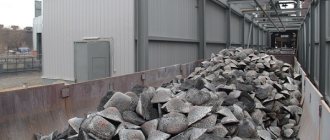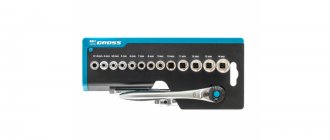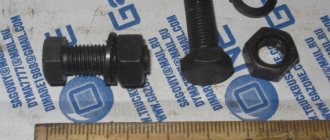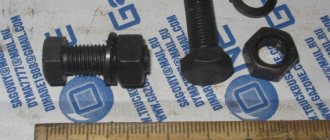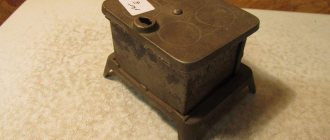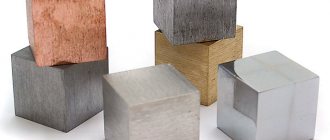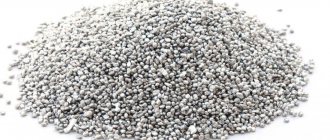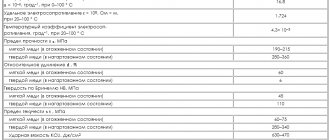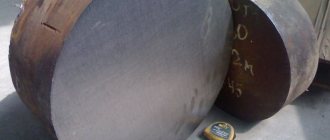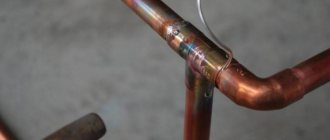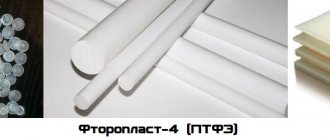Cast iron consists of carbon, iron and some impurities. It is one of the main materials of ferrous metallurgy. Cast iron is used in the manufacture of household and utility items, machine parts and in other industries. It is used in production, focusing and taking into account its properties and characteristics.
This article is precisely intended to tell you about the density of high-strength, liquid, white and gray cast iron, its melting points and specific heat capacity will also be considered separately.
Thermal properties of cast iron
Cast iron, like any metal, has the following properties: thermal, physical, mechanical, hydrodynamic, electrical, technological, chemical. Let's look at each properties in more detail.
This video talks about the structure and composition of cast iron alloys and the dependence of their properties on a specific composition:
Heat capacity
The thermal capacity of cast iron is determined using the displacement rule. When the heat capacity of cast iron reaches a temperature period, the beginning of which begins at a temperature whose value is greater than phase transformations and ends at a level equal to the melting temperature, then the heat capacity of cast iron takes on a value of 0.18 cal/Ho C.
If the value of the melting temperature exceeds the absolute value, then the heat capacity is equal to 0.23 ± 0.03 cal/Ho C. If the solidification process occurs, then the thermal effect is equal to 55 ± 5 cal. The thermal effect depends on the amount of pearlite when pearlite transformation occurs. Typically it takes a value of 21.5 ± 1.5 cal/G.
The volumetric heat capacity is taken to be the product of the specific gravity and the specific heat capacity. For solid cast iron this value is 1 cal/cm3*ºС, for liquid cast iron – 1.5 cal/cm3*ºС.
The specific heat capacity of cast iron is 540 J/kg C.
Specific heat capacity of cast iron and other metals in table form
Thermal conductivity
Unlike heat capacity, thermal conductivity is not determined by the displacement rule. Only if the amount of graphitization changes, the composition of the cast iron will affect the thermal conductivity.
Thermal diffusivity
The thermal diffusivity value of solid cast iron (for large calculations) can be taken equal to its thermal conductivity, and that of liquid cast iron – 0.03 cm2*/sec.
Read below about the melting point of cast iron.
Melting temperature
Cast iron melts at a temperature of 1200ºС. This temperature value is 300 degrees lower than the melting point of steel. With an increased carbon content, this chemical element has a close connection at the molecular level with iron atoms.
During the process of melting cast iron and its crystallization, the carbon component cannot completely penetrate the structural lattice of iron. As a result, the material cast iron takes on the property of brittleness. Cast iron is used for parts that require increased strength. However, cast iron is not used in the manufacture of objects that will be subject to constant dynamic loads.
The table below shows the melting point of cast iron in comparison with other metals.
Melting point of cast iron and other metals
What is cast iron?
The word itself has Turkic roots, and the technology for making cast iron was first developed in China back in the 10th century. The Chinese made minted coins from the alloy, but they quickly went out of use, because bronze was much more practical in terms of forging.
Production volumes of the alloy increased after 1900 and reached 18 million tons. In 2010, more than 930 million tons were spent on the production of cast iron products, and in 2020 the values far exceeded 1,300 million tons of cast iron.
1) Pros/cons of cast iron + its differences from steel
Cast iron is an alloy of iron and carbon. Moreover, the percentage of the second is approximately 2.1%.
| Advantages of cast iron | Disadvantages of the material |
| Some variations of iron-carbon alloys have increased strength characteristics, which puts cast iron on the same level as steel. | If the surface of the material is exposed to water for a long time, it will begin to become covered with a layer of rust that is difficult to wash off. |
| Cast iron evenly distributes heat when heated + maintains temperature for a long time, which has made the material very popular among housewives. | The high cost of cast iron compared to the same steel and aluminum. |
| Cast iron is an environmentally friendly product. | Low indicator of practicality, inherent only in relation to the gray variety of cast iron. |
| It has high levels of hygiene and is resistant when in an alkaline-acidic environment. | White cast iron is too brittle, so most of the raw materials are used exclusively for remelting. |
| As cast iron ages, it only improves its quality, and therefore products made from the specified metal are extremely durable. |
Cast iron is a material in ferrous metallurgy, and its characteristics are quite close to steel. That is why cast iron products are often compared with steel ones, drawing parallels between their basic properties in their pure form.
Differences between cast iron and steel:
- Cheaper.
- Dark surface color.
- It's easier to cast, but harder to forge and weld.
Welding cast iron at home
- Lower strength rating.
- Lighter than steel products.
- Higher percentage of carbon.
Considering cast iron as a structural substance, its representation is a cavity made of metal with graphite inclusions. The structure of the material is dominated by 3 components - graphite with high plasticity, pearlite and ledeburite. Depending on the type of cast iron, the proportions of the specified elements can vary significantly in proportion.
| Type of cast iron | Peculiarities | Popularity (out of 5 ★) |
| White | It is the starting material for producing other types of cast iron. The carbon inside is in a bound form - Fe3C. When the amount of carbon changes, the subgroup of white cast iron also changes - at 4.2% eutectic, and from 4.2% to 6.7% hypereutectic. Cast iron got its name because of the white color of cement at the point where the material breaks. | ★★★ |
| Grey | The alloy is based on iron, carbon + silicon in an amount of 1% -3.5%. Permanent impurities include Mn, P and S. The structure provides for the content of graphite in plastic form. When broken, the color is gray. | ★★★★ |
| Malleable | Obtained by annealing white. The structure is flake-like. The base is ferrite, but sometimes pearlite. The name is a derivative of the property of high plasticity, which allows high-quality processing of the material. The physical properties of ductile iron include strength and impact resistance. | ★★★★★ |
| Half-hearted | Contains carbon in two forms - as graphite and as cementite. The structure is flake-like. The material is often used in dry friction conditions. Half cast iron materials have increased wear resistance. | ★★★★ |
| High strength | The basis of the structure is spherical graphite obtained by crystallization. Does not apply to voltage concentrators. It has high compressive strength, good casting properties, wear resistance + good machinability. | ★★★ |
There is also cast iron, but due to its inconsistency as an independent material, it is not found among household/industrial products. The material is used as an auxiliary component in steel processing.
Cast iron marking:
- P1-2 – limiting types 1 and 2;
- PL1-2 – processing and foundry;
- PF1-3 – phosphorous pigment;
- PVK1-3 – high-strength pig iron;
- SCH – cast iron contains lamellar graphite;
- AChS/AChV/AChK – gray/high-strength/malleable cast iron with anti-friction properties, respectively;
- H – doped.
Nodular graphite for casting is marked with HF + numerical values that indicate tensile strength and elongation as a percentage.
2) Characteristics, properties and structural features of cast iron
Based on its structure, cast iron is classified into 3 types - pearlitic, ferritic and pearlitic-ferritic. Graphite is contained in each type, but its percentage differs.
The forms of graphite inside the alloy also differ:
- spherical. The mineral becomes the specified form due to the addition of magnesium. The characteristics of the resulting cast iron are high strength;
- petal. Or, as it is often called, plastic form. The property comes from the second version of the name. Due to the petal structure of the mineral, a high margin of ductility is provided, therefore, the shape is common in most common types of cast iron;
- flaky. The particle shape is caused by the annealing of white type cast iron. A typical representative of flake-like graphite is malleable cast iron;
- vermicular. The shape predominates in gray cast iron. The purpose of its development is to increase the level of ductility and other characteristics of the material.
physical characteristics
Weight
The weight of the material varies depending on the amount of fixed carbon and the presence of a certain percentage of porosity. The specific gravity of cast iron at the melting point can be significantly reduced depending on the presence of impurities in the cast iron.
In addition, the linear expansion of the metal and the structure of cast iron changes depending on the state of each indicator. That is, these are dependent quantities.
The specific gravity of each cast iron differs depending on the type of material. Gray cast iron has a specific gravity of 7.1±0.2 g/cm3, white cast iron has a specific gravity of 7.5±0.2 g/cm3, and malleable cast iron has a specific gravity of 7.3±0.2 g/cm3.
The video below will tell you about some of the physical properties of cast iron:
Volume
The volume of cast iron, passing through the temperature of phase transformations, reaches an increase of 30%. However, when heated to 500ºC, the volume increases by 3%. Growth is aided by graphite-forming elements. Carbide-forming components inhibit volume growth. The same growth is prevented by applying galvanic coatings to the surface.
The carbon content is usually at least 2.14%. Thanks to the carbon content, cast iron has excellent hardness. However, the plasticity and malleability of the material suffers against this background.
We will talk about the density of cast iron below.
Density
The density of the described material, cast iron, is 7.2 g/cm3. If we compare other metals and alloys with cast iron, this density value is quite high.
Due to its good density, cast iron is widely used for casting various parts in industry. In terms of this property, cast iron is only slightly inferior to some steels.
Melting temperature
Cast iron is considered the best metal for smelting. Its high fluidity rate and low shrinkage allow it to be used more effectively in casting. Below are the boiling points for different types of this metal in degrees Celsius:
- Gray cast iron - melting point reaches 1260 degrees. When pouring into molds it rises to 1400.
- White – melts at 1350 degrees. Poured into molds at 1450.
The melting rates of cast iron are 400 degrees lower than those of steel. This reduces energy costs when processing cast iron.
Mechanical Features
Tensile strength
The compressive strength of cast iron depends on the structure of the material itself. The components of the structure gain their strength along with an increase in the level of dispersion. The tensile strength is strongly influenced by the number, size, distribution and formagraphite inclusions. The tensile strength decreases by a noticeable amount if the graphite inclusions are arranged in the form of a chain. This arrangement reduces the cohesion of the metal mass.
The tensile strength reaches its maximum value when the graphite takes on a spheroidal shape. This form is obtained without the influence of temperature, but when cerium and magnesium are included in the cast iron mass.
- When the melting temperature increases to 400ºС, the tensile strength does not change.
- If the temperature rises above this value, the tensile strength decreases.
- Note that at temperatures from 100 to 200ºС, the tensile strength can decrease by 10-15%.
Plastic
The ductility of cast iron largely depends on the shape of the graphite, and also depends on the structure of the metal mass. If graphite inclusions have a spheroidal shape, then the percentage of elongation can reach 30.
- In ordinary gray cast iron, the elongation reaches only a tenth.
- In annealed gray cast iron, the elongation is 1.5%.
Elasticity
Elasticity depends on the shape of the graphite. If the graphite inclusions did not change, and the temperature increased, then the elasticity remains at the same value.
The elastic modulus is considered a conditional value, since it has a relative value and directly depends on the presence of graphite inclusions. The elastic modulus decreases if the number of graphite inclusions increases. Also, the elastic modulus increases if the shape of the inclusions is distant from the globular shape.
Impact strength
This indicator reflects the dynamic properties of the material. The impact strength of cast iron increases:
- when the shape of graphite inclusions is close to spherical;
- when the ferrite content increases;
- when the graphite content decreases.
Endurance limit
The endurance limit of cast iron becomes greater when the frequency of loading increases and the tensile strength becomes greater.
Cast iron: what is its melting point?
Now let's talk about the temperatures that a person will encounter when melting cast iron in its various manifestations. We have already found out that it is extremely difficult to produce cast iron at home due to technological features, but when working at metallurgical plants, knowing the basic properties of the alloy is vital.
1) Thermal properties of the alloy
Each metal changes its physical properties when exposed to low/high temperatures, and this is in addition to interspersed impurities. For cast iron, these are magnesium, manganese, silicon, sulfur, phosphorus and others. Sometimes alloyed materials are added to the alloy, which can increase/decrease the properties of cast iron by 3-5 times.
The basic characteristics are shown in the figure above, and the table below will tell you more about the thermal properties of cast iron. Let’s take into account 3 basic parameters (in addition to the melting point) – heat capacity, thermal conductivity and thermal diffusivity.
| Property | Characteristic |
| Heat capacity | Heat capacity is the change in temperature of a cast iron workpiece by one Kelvin under heat treatment. The property is directly dependent on the auxiliary components of the alloy and the temperature used. An increase in t proportionally increases the value of the heat capacity. For solid cast iron it is 1 cal/cm^3*G, and for molten cast iron it is 1.5 cal/cm^3*G. The specified values help to calculate the ratio of heat capacity and volumes of the substance as a whole. |
| Thermal conductivity | The parameter makes it clear how well the metal is able to conduct thermal energy. For cast iron, the dependence results in 2 points - the presence of additional impurities in the alloy and the structure of the metal. Solid cast iron has higher thermal conductivity than molten cast iron. Variability within 0.08-0.13 cal/cm sec |
| Thermal conductivity | The parameter is responsible for the ability of the material to change the temperature values of the body. During the calculation process, the range of thermal conductivity in different grades of cast iron is taken into account. For liquid cast iron this is 0.03 cm^2/sec. In addition to the calculations, there is an indicator of heat capacity. |
Occasionally, a coefficient of thermal expansion is also used, which varies depending on the type of cast iron, namely, the percentage of carbon content.
A detailed description of the features of cast iron and its scope of application:
Hydrodynamic properties
Dynamic viscosity
Viscosity becomes less if the amount of manganese in cast iron increases. A decrease in viscosity was also noticed with a decrease in the content of sulfur impurities and other non-metallic components.
The process is affected by the temperature value. Thus, the viscosity becomes less when the ratio of two temperatures is directly proportional (the temperature of the experiment and the start of solidification).
Surface tension
This figure is 900±100 dynes/cm2. The value increases as the amount of carbon decreases and undergoes significant changes in the presence of non-metallic components.
Toxicity
Cookware is often made from cast iron. The fact is that cast iron as a material is non-toxic and tolerates temperature changes well.
Electrical characteristics
The electrical conductivity of cast iron is assessed using Kurnakov's law. The electrical resistance of some types is given below:
- white cast iron - 70±20 Mk·oi·cm.
- gray cast iron - 80±40 Mk·oi·cm.
- malleable cast iron - 50±20 Mk·oi·cm.
According to the weakening effect on electrical resistance, the elements of solid cast iron can be arranged as follows: first - silicon, second - manganese, third - chromium, fourth - nickel, fifth - cobalt.
Chemical properties
The corrosion resistance of a material depends on the external environment and its structure. If we consider cast iron from the side of decreasing electrode potential, then its components have the following arrangement: graphite-cementite, phosphide eutectic-ferrite.
It should be noted that the potential difference between graphite and ferrite is 0.56 V. If the dispersion increases, the corrosion resistance becomes less. With a strong decrease in dispersion, the opposite effect occurs, and corrosion resistance decreases. Alloying elements also affect the resistance of cast iron.
The influence of impurities on the characteristics of the metal
Industrial cast iron contains impurities. These impurities greatly affect the properties, characteristics and structure of cast iron.
- Thus, manganese inhibits the graphitization process. The release of graphite is stopped, as a result, cast iron acquires the ability to bleach.
- Sulfur degrades casting and mechanical properties.
- Sulfides are mainly formed in gray cast iron.
- Phosphorus improves casting properties, increases wear resistance and increases hardness. However, against this background, cast iron still remains fragile.
- Silicon has the greatest influence on the structure of the material. Depending on the amount of flint, white and ferritic cast iron are obtained.
To obtain certain characteristics, special impurities are often introduced into cast iron during its manufacture. Such materials are called alloy cast iron. Depending on the added element, cast iron can be called aluminum, chromium, or sulfur. Basically, elements are introduced with the aim of obtaining a wear-resistant, heat-resistant, non-magnetic and corrosion-resistant material.
This video will compare the properties of cast iron and steel:
Impurities
Of course, this metal contains more than just iron and carbon. It contains the same elements as steel alloys - phosphorus, manganese, sulfur, silicon and others. These additives indirectly affect the characteristics of the alloy - they change the course of graphitization. The quality of the material depends on this parameter.
- Phosphorus. Has little effect on the formation of graphite. But it is still needed, because it improves fluidity. Solid inclusions of phosphorus provide high hardness and wear resistance of the metal.
- Manganese. It interferes with graphitization and, as it were, “bleaches” cast iron.
- Sulfur. Like silicon, it promotes bleaching of the metal, and also impairs fluidity. The amount of sulfur in the alloy is limited. For small castings no more than 0.08%, for parts more - up to 0.1-0.12%.
- Silicon. Strongly affects the properties of the material, increasing graphitization. The metal can contain from 0.3-0.5 to 3-5% silicon. By varying the amount of silicon, an alloy with different properties is obtained - from white to high-strength.
- Magnesium. Helps to obtain material with spherical grain shape. The boiling point of magnesium is low (1107˚C). For this and other reasons, introducing magnesium into the alloy is difficult. To avoid its boiling, the material is smelted using various methods of introducing magnesium.
In addition to the usual impurities, cast iron may contain other substances. This is the so-called alloyed material. Chromium, molybdenum, vanadium interfere with the process of graphite formation. Copper, nickel and most other substances contribute to graphitization.
